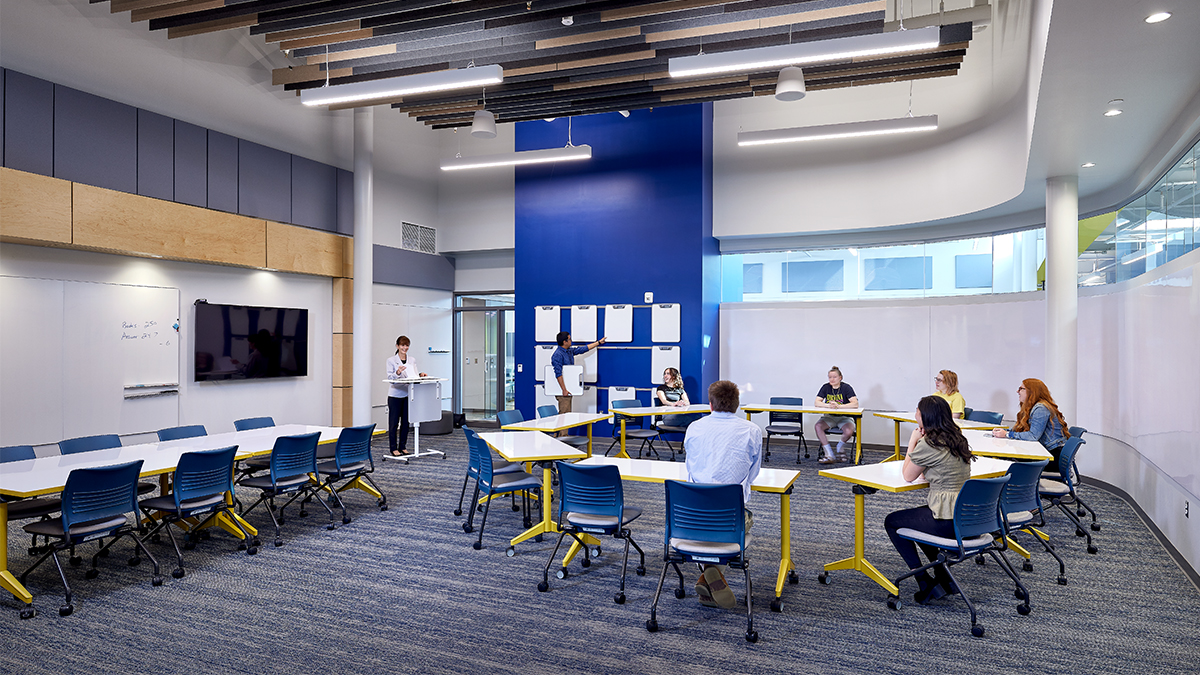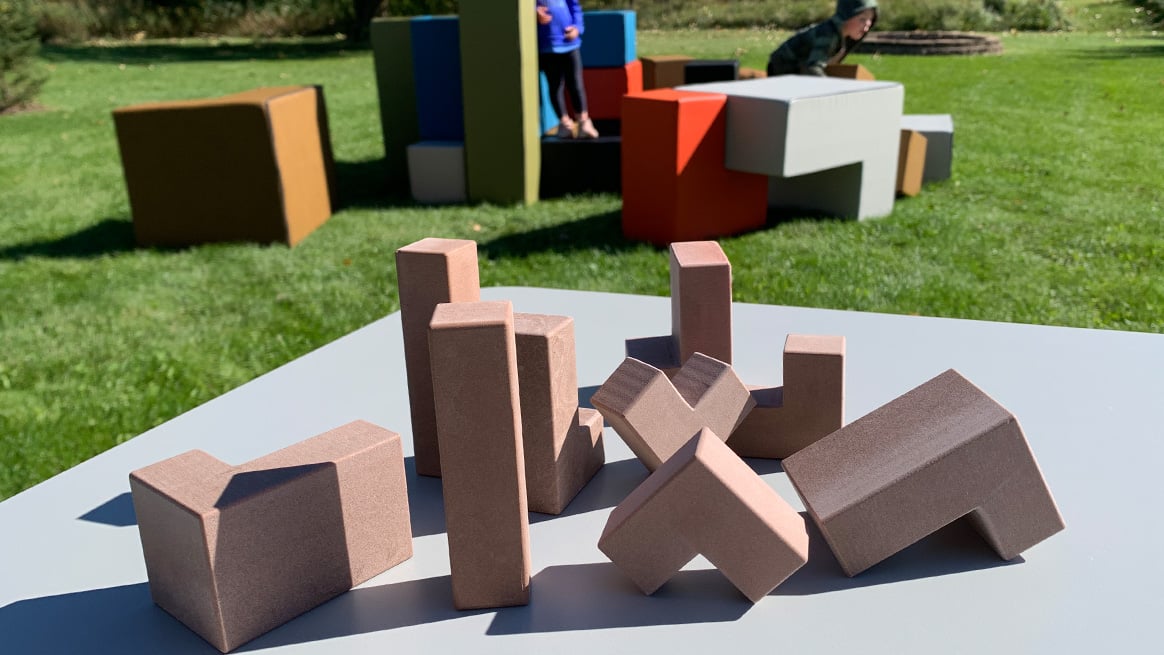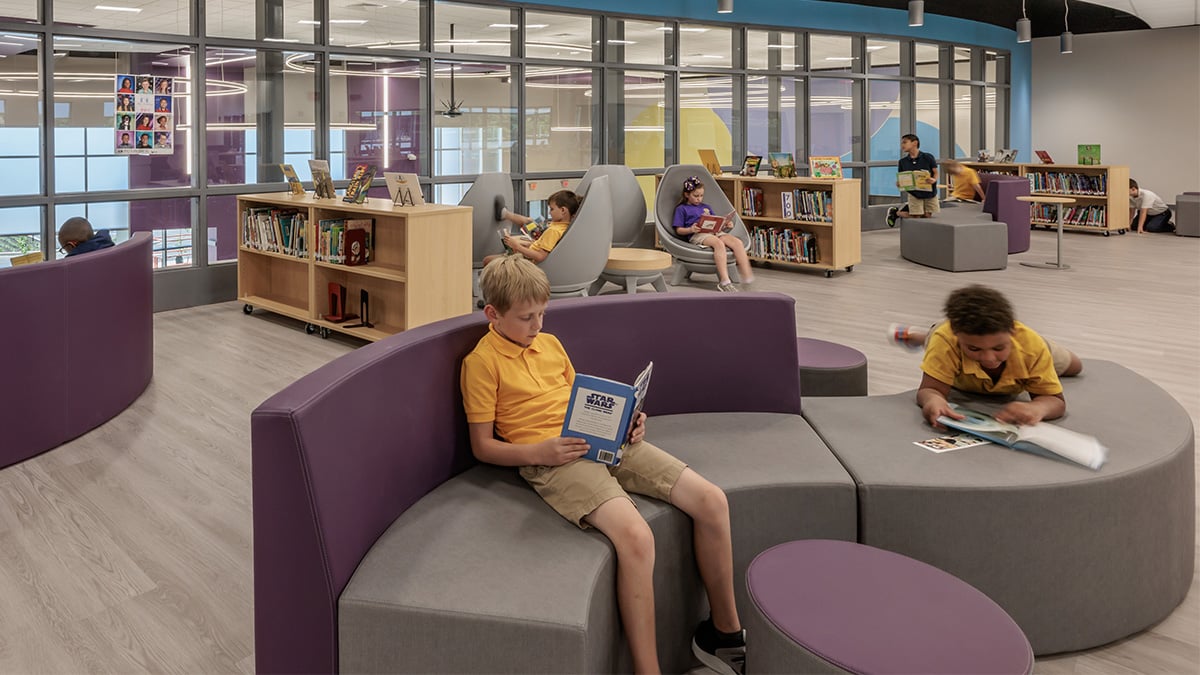What is the Role of Universal Design in Education?

Explore universal design principles for inclusive education spaces that cater to the needs of every student regardless of age, ability, or learning style.
At KI, we believe all students deserve a learning environment that meets their individual needs.
No two students are the same, so we can't expect classrooms and curricula to function the same, either. But in today’s complex world, customizing classroom pedagogy and physical spaces is not an easy task for educators and administrators at K-12 and higher education institutions across the country.
To simplify that complexity, we break down the ways universal design can be used in pedagogical curricula as well as in physical classrooms. We answer the questions: How does universal design for learning as a pedagogy differ from universal design in physical learning environments? How might educators, administrators, planners, and designers use both in the classroom?
Let's dive in!
Universal Design for Learning Pedagogy
“Universal design for learning” is a pedagogy used primarily in K-12 education. It’s a widespread practice that informs the everyday work of most teachers, from lesson planning to classroom management.
Universal design for learning emphasizes not only the context of what is taught but how it’s taught. This is encapsulated in three distinct pillars:
- Engagement: Teachers seek to motivate learners by offering them different choices for lessons, incorporating games, encouraging movement, and connecting lessons to real life.
- Action and Expression: Educators ensure students have different ways to learn and demonstrate their knowledge. Rather than assigning all students to write an essay or give an oral report, a variety of options are provided, according to Cornell University’s Center for Teaching Innovation.
- Representation: Similarly, the lesson material is offered in a variety of formats to support students who are visual, auditory, or kinesthetic learners. This approach also supports a variety of types of intelligence.
With these pillars as a guide, many teachers use universal design for learning as a roadmap when devising their lesson plans, instructions, and classroom activities, whether they’re familiar with the pedagogical term or not.
Universal Design in Physical Learning Spaces
Different from educational pedagogy, universal design in physical space refers to a framework centered on the idea that good design intentionally benefits us all. A product, service, or process created with universal design should be functional, accessible, and inclusive to the widest range of people. It’s relevant in K-12 education, higher education, and in many other aspects of our lives.
A great example is kitchen supplier OXO’s angled measuring cup, which allows people to accurately measure liquids by gazing down into the cup. You don’t have to bend down or lift the cup to eye-level to use it. It's a simple yet highly effective and widely accessible design.
To better understand universal design from a physical perspective, take note of these seven principles:
- Equitable Use: Can every person access it? Does this work easily for everyone?
- Flexibility in Use: Can people use it in different ways or to accommodate different preferences?
- Simple and Intuitive Use: Is it easy for people to figure out how to use it without prior knowledge or experience?
- Perceptible Information: Does it have visual cues or other means of communication that help people figure out how to use it?
- Tolerance for Error: Does it minimize hazards if someone doesn’t use it as intended?
- Low Physical Effort: Can people use it comfortably and without fatigue?
- Size and Space for Approach and Use: Is there enough space for people with diverse abilities to approach and use it?
So much of the universal design process is a result of trial and error.
For instance, when our team at KI was designing the Imaginasium collection, we went through many iterations as a result of observational research. When we saw how young kids interacted with the blocks and blips differently than adults, we made critical updates to the design in terms of scale, foam density, and even the upholstery.
Universal design in the classroom can either be supported or hindered by critical factors such as furniture selection and layouts. Considerations for educators and learning administration include:
- Seating: Is the seating comfortable for students of different sizes and abilities? Is it inclusive of safe options for students who fidget or wiggle?
- Arrangement: Does furniture easily reconfigure to accommodate group work, partner work, and independent work? Can tables flip up and nest to create open space in the classroom?
- Wayfinding: Walk around your classroom from the perspective of your students. Can all students intuitively find and reach their supplies?
Ultimately, universal design is a process and a mindset. There’s no final destination. Ask for and implement feedback from parents and students, follow your curiosity, and get comfortable with experimenting as you seek to achieve your best outcomes.
Everyone Benefits from Universal Design
In education, universal design challenges the misguided idea that there’s one right way to learn, one right way to teach, and one right way to set up learning environments.
Rather, universal design invites us to celebrate diversity in learning and make space for everyone in the classroom so all students feel supported and excited about coming to school each day.
Ultimately, the most beautiful thing about universal design for learning pedagogy and universal design in physical spaces is that these frameworks ask us to take on a new perspective. They challenge us to draw on empathy and to understand life through the lens of another person’s experiences and identities.
Start with a sense of curiosity and explore to see what else is possible!
Related Content
 Blog
Blog
Learn how universal design creates an environment that adapts and responds to students' individual needs in a way that’s impactful for everyone.
 Blog
Blog
Discover how this innovative design solution began with observational research to better understand how young students think, behave and interact with their learning environment.
 Blog
Blog
Learn how authentic, adaptive learning spaces for young students support the process of cognitive development by way of fun, playful, comfortable environments that feel like home.
Subscribe
Stay up to date with the latest trends and more.










